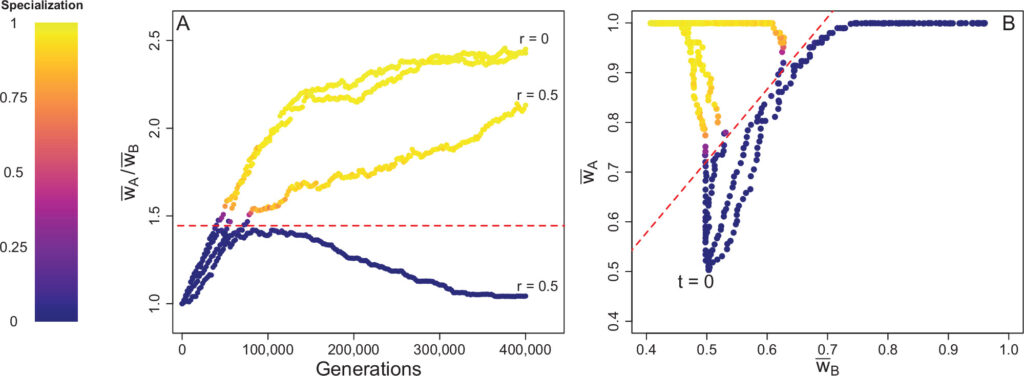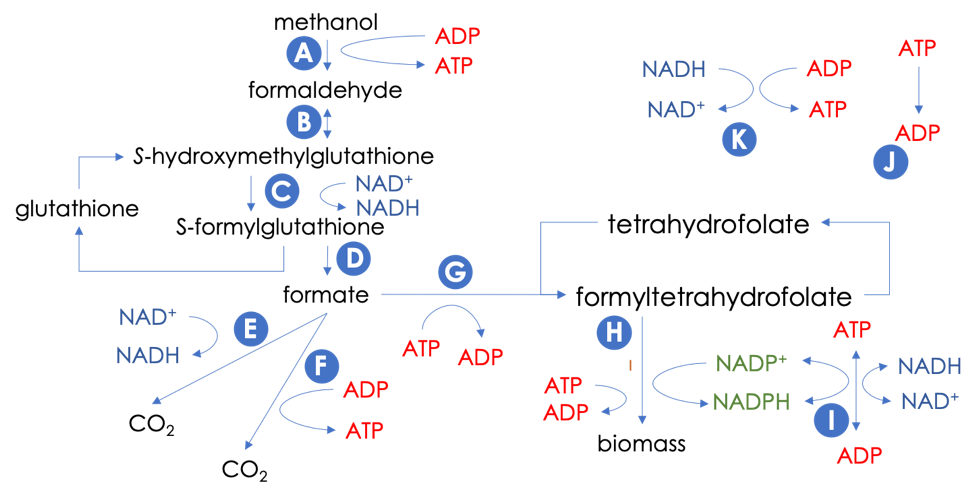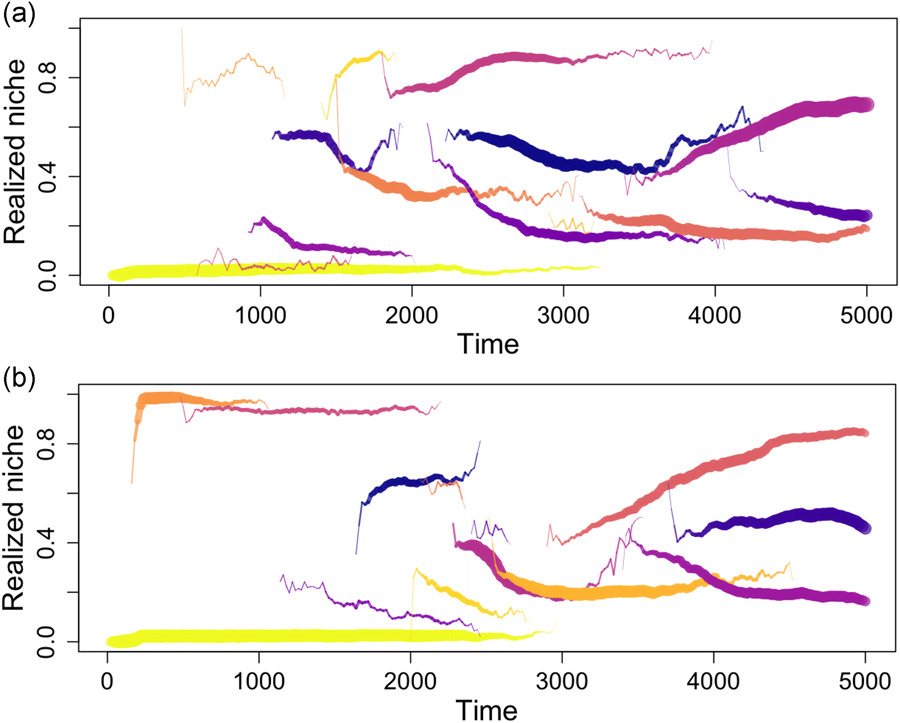Most people think of evolution as a very slow and incremental process, but change can also be quick and innovative. This rapid adaptation can help a population dodge extinction, exploit a new niche, or transform its relationship to its environment. We use computer simulations, mathematical models, and evolution experiments with microbes to learn about how these big changes happen.

Adaptive Evolution of Niche Breadth
In an NSF-funded project, we’re examining how rapid evolution and environmental change can come together to drive specialization–a population focusing in on a narrower niche. We hope to understand what features of a species might predict its propensity to narrow, maintain, or even broaden its niche in the face of competing demands from multiple changing environments. See our first publication from this project in Draghi (2021) Am. Nat.

Predicting Evolution with Phenotypic Models
With collaborators in the Marx, Martinez-Gomez, and Dalia labs, we’re fitting data to a model of metabolism in a model bacterium to understand gene interactions, explain the phenotypic bases of fitness, and ultimately predict outcomes of evolution experiments in the lab. See Chou, Delaney, Draghi & Marx (2014) for an early publication on this work.

Evolvability as a mediator of generalist-specialist competition
A species’ niche–its place in an ecosystem–is not fixed, but evolves and responds to change across that species’ community. Evolution of the species and its competitors, prey, predators, parasites, or hosts, all work to dynamically shape the niche, and past evolution provides a historical framing for why a species functions as it does today. We tackle these complex issues with models combining ecology and evolution. In a recent pair of papers, we looked at how intrinsic noise in development can smooth fitness landscapes to allow plastic generalists to flourish, and how environmental noise across a spatial landscape can shape competition between generalists and specialists. We’re continuing to push toward a theoretical understanding of how evolvability differences shape communities and are expanded to test these theories with lab experiments with microbes.